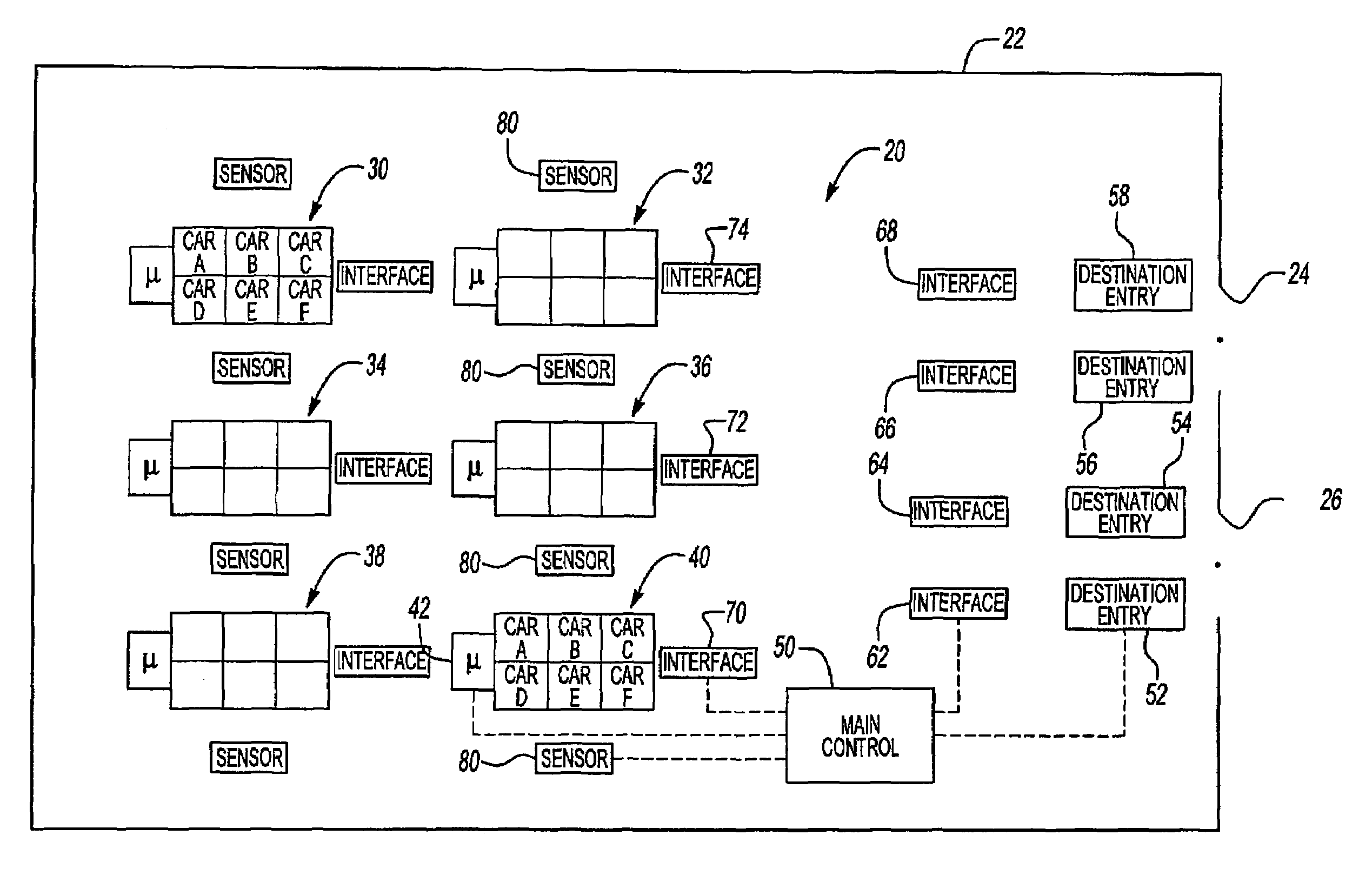Destination entry system with delayed elevator car assignment
a technology of destination entry and assigned cars, applied in the field of elevator systems, can solve the problems of increasing the complexity and affecting the efficiency of the assigned car
- Summary
- Abstract
- Description
- Claims
- Application Information
AI Technical Summary
Benefits of technology
Problems solved by technology
Method used
Image
Examples
Embodiment Construction
[0014]FIG. 1 schematically shows an elevator system 20 within a building 22. A plurality of access points 24 and 26 (i.e., doorways) allow individuals to enter a portion of the building space. The access points 24 and 26 are located remotely and, in this example, a considerable, fixed distance from a plurality of elevator groups 30, 32, 34, 36, 38 and 40.
[0015]The example elevator system 20 includes controlling elevator car movement and directing passenger traffic using destination entry techniques. The example system is particularly well suited to directing passengers to their assigned car even when there is a considerable amount of time between when the passenger's destination request is received by the system and when the passenger arrives in the vicinity of an appropriate elevator car.
[0016]Considering the elevator group 40 as an example, a plurality of cars A-F are included within the group. Known techniques for assigning particular cars to particular floor destinations are use...
PUM
 Login to View More
Login to View More Abstract
Description
Claims
Application Information
 Login to View More
Login to View More - R&D
- Intellectual Property
- Life Sciences
- Materials
- Tech Scout
- Unparalleled Data Quality
- Higher Quality Content
- 60% Fewer Hallucinations
Browse by: Latest US Patents, China's latest patents, Technical Efficacy Thesaurus, Application Domain, Technology Topic, Popular Technical Reports.
© 2025 PatSnap. All rights reserved.Legal|Privacy policy|Modern Slavery Act Transparency Statement|Sitemap|About US| Contact US: help@patsnap.com


